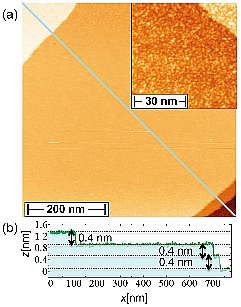P5
Spin-resolved spectro-microscopy of correlated surface and interface systems

M. Bode
In this project we will perform spin-averaged and spin-resolved studies of two classes of low-dimensional materials which both exhibit electron correlations, i.e. oxide heterostructures and two-dimensional Kondo lattices.
To achieve access to the buried interfaces of oxide heterostructures, such as LaAlO3/SrTiO3 (LAO/STO) or LaVO3/SrTiO3 (LVO/STO), samples will be fractured under UHV conditions to expose their cross-section. Thereby structural and electronic properties of the interfaces can be studied in situ. Combining the atomic resolution capability of scanning tunneling microscopy (STM) with spin-averaging and spin-resolved scanning tunneling spectroscopy (STS) the lateral distribution of the (spin dependent) density of states will be investigated. As far as single layers are concerned key questions to be answered are the position and spatial distribution of the 2-dimensional electron gas. These properties are of particular relevance in multilayer structures where the coupling between the interfaces depends on the periodicity of the layers.
We will study the impact of imperfections, such as defects and variations in layers thickness. The results will be compared with photoemission electron microscopy (P4), XMCD-PEEM (P7), and dynamic mean field theory (DMFT) calculations (P8).
In the second part of this project we will investigate two-dimensional Kondo systems, such as CePt alloys which are also the subject of projects P3, P7, and P9. While spatially averaging techniques require homogeneous surfaces, the high spatial resolution of STS also allows for the characterization of inhomogeneous surfaces with different local Ce coverages.
We will perform high-resolution variable temperature STS above and below the coherence temperature T* which marks the transition between the single impurity limit and coherent heavy-fermion bands. In addition, we will perform spectroscopic imaging (SI) measurements to potentially detect quasi-particle interference (QPI) patterns through Fourier transformation in k-space.
Although STS lacks intrinsic k-resolution, it is complementary to other spectroscopic techniques as it offers high-energy resolution above and below the Fermi level for a wide temperature range with the option of applying high magnetic fields.

